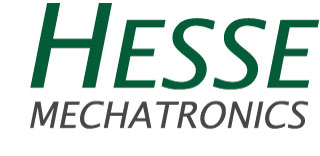Transport system
All machines of Hesse GmbH can be equipped with a standard transport system or a customized version for a fully automated manufacturing in production lines or cells. In addition to single products and/or multi panels also Auer boats or other kind of product carriers can be used on the transport lane. As a service, the Hesse GmbH provides the design and manufacture of customized product carriers.
Basic design
- Transport system consisting of one segment with a bonding station
- Manual adjustable transport rail width
- Transport direction is from left to right
- Product detection by sensors
- Belt drive with stepper motor (belts antistatic coated)
Optional
- Transport system e.g. with 3 segments: Input buffer, bonding station and output buffer (Input and output buffer can also be used as preheat station or postheat station to cool down slowly)
- Transport systems with 2 or 3 lanes for parallel processing and transportation of products
- Dual lane system with shuttle transport for parallel using of several bond stations
- Additional bypass lane through the machine to increase the line availability at maintenance work or to optimize the index times for production cells with more machines
- Automatic adjustable rail width of the transport lane
- Linear drive with gripper for high throughput
- „Walking beam“ for Auer boats or product carriers
Magazine lifts
All machines of Hesse GmbH can be equipped with magazine lifts for the setup of manufacturing cells or islands. Our standard solution consists of simply attached lifts to the transport system, with the advantage of a cost-effective solution and optimum footprint.
Basic design
- Integrated width adjustable magazine lifts each for 1 magazine up to max. 18 kg
- Pusher for loading and unloading of products
- Magazine detection
Optional
- Short-pusher version with press rollers on the transport system
- Belt drive in the magazine for transfer to the transport system
- Slot monitoring at the magazine
- Magazine clamping
- Integrated lifts with capacity for several magazines
- Material handling systems with several lanes
- Stand-alone-lifts
Bonding station
The core piece of the automation in the Hesse GmbH machine is the bonding station with its individual design layout and clamping principle. In general, the bonding station is disconnected from the transport system to prevent external influences and to ensure optimal bonding conditions. For different products or product carriers standard solutions have been developed, based on this special solutions can be developed.
Basic design
- Lifting cylinder with position monitoring
- Clamping with vacuum and vacuum monitoring
- Offbond station
Optional
- Vacuum and mechanical clamping
- Bonding station with heating to 250°C
- Vacuum monitoring and circuit in separate circles
- Tool-less quick-change system for product clamping
- Additional heated bonding station incl. vacuum sensor
Visualization
By default, the operation of the automation of Hesse GmbH occurs via the machine interface including graphical representation of the current process state. In addition, an optional touch screen for complex automation systems and solutions are used with extended capabilities. Using a graphical user interface the production and setup can be visualized with manual control.
Visualization in automatic operation / production mode:
- Display of the machined magazine slot
- Display of the transport segment (preheating, bonding station, etc.) in which the product is located currently
- Scanned barcode of the product; such as scanning order data
- Temperature of heating (with monitoring function of the target state)
Visualization and control in manual setup / setup mode:
- Current status of the sensors
- Position of the axes
- Manual control of the entire automation system (e.g. motion of the bonding station, and/or operation of the vacuum)
MES Interface
We are able to realize a connection to any MES (Manufacturing Execution System). Product information such as bond program or rework data are determined and process results are returned for every product. The setup condition of the machine can be validated and parameters of automation can be received. MES connections are always realized as customer specific solutions.
Examples / options for MES-interfaces:
- Connection to customer database
- Connection to existing systems or MES server (such as iTAC)
- Development of customized solutions
- Individual solutions for connection to SECS / GEM host





